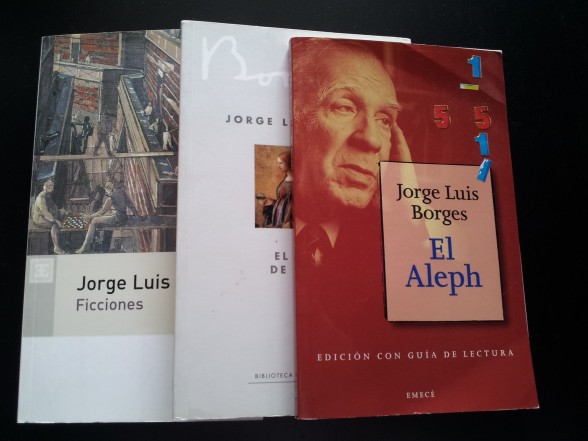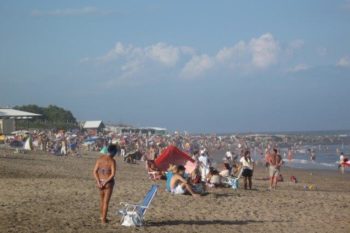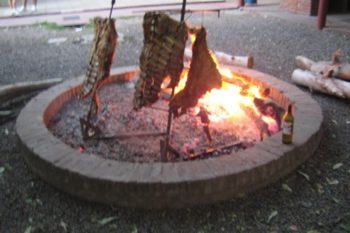Jorge Luis Borges is considered the most prominent and influential Argentinean writer of all times. He penned essays, newspaper articles, poetry and short stories, which he mastered to the highest degree.
His work has influenced countless other writers from around the world, such as Colombian author Gabriel García Márquez or Umberto Eco. The Italian writer paid tribute to Borges in his acclaimed novel The Name of the Rose with the character Jorge de Burgos –a blind monk.
Although he was well-known in his country, international recognition came late in life: Borges was awarded the International Publishers’ Prize in 1961, when he was in his sixties. Only then was his work translated into English. That year Borges also received an invitation from the University of Texas and in 1967 he was invited by Harvard University to become a visiting professor for a year.
Jorge Luis Borges was born in Buenos Aires on 24 August, 1899. His father was a lawyer and the son of a colonel in the Argentinean army. His mother, Leonor Acevedo, came from a family of faded splendor who gave the nation many military heroes.
The Borges’ was a bilingual household: both parents spoke English and Spanish. His English paternal grandmother told him old stories and read to him in English. Later, Borges said that his grandmother’s English dry wit influenced his writing style.
Palermo, the neighbourhood where Borges lived before their European experience, also exerted significant influence on his work. At the turn of the 20th century, hoodlums swaggered about this seedy barrio, knife-fights were ubiquitous, prostitutes and punters danced the forbidden tango in brothels, and people told stories of duelling gauchos.
The family moved to Geneva in 1914 so that his father could get the best available medical treatment for his progressive blindness, which he passed on to his son Jorge, who also became blind in middle age. The outbreak of World War I forced the family to stay in Switzerland. Jorge and his younger sister Norah attended college in Geneva. They then moved to Spain and eventually returned to Buenos Aires in 1921.
Fired up by his European experience, Borges began to write poems and published his first collection in 1923 called Fervor de Buenos Aires. The years between 1924 and 1933 were exciting and productive: he founded several literary magazines and wrote for others. Borges also wrote poems and essays published as a collection called Luna de Enfrente (1925). Cuaderno San Martin (1929) won him a prize.
In 1937 Borges took a job as assistant librarian. This job, which he held for nine years, proved to be highly unsatisfactory. Every morning he carried out his tasks in an hour or so and then burrowed in the library’s basement, where he read, wrote and translated modern fiction into Spanish. This would be the inspiration for his “Library of Babel”. Sometime later, he resigned from this position forced by the political situation –he criticized President Peron’s fascist leanings- and became a lecturer on American and English Literature.

Borges published what is considered to be his masterpiece in 1944: Ficciones. It comprises seventeen short stories that explore the labyrinthine nature of reality. Labyrinths are a major theme in his oeuvre. Many stories are reviews of imaginary books written by imaginary authors, which is a recurrent device in Borges. Fiction and reality are seamlessly intertwined in his writing.
His second collection of stories, El Aleph, was published in 1949. Here, Borges deals with similar themes: the relationship between consciousness and reality, language and symbols, time and eternity, labyrinths, reviews of fictional books, gaucho stories (Argentinean cowboys), and the reworking of known myths into new stories. The House of Asterión is one such example, in which Borges retells the myth of the Minotaur.
The first collection of Borges’ short stories I ever read was Doctor Brodie’s Report (El informe de Brodie), first published in 1970. Here, Borges revisits the long gone era of gauchos and compadritos, tango and brothels. It was a sort of primer that would allow me to move on to other works. However, it didn’t quite work out like that. Borges’ writing is complex and has many layers of meaning and symbolism and a myriad of references to philosophy, history, Judaism, literature, to name a few. Only after I took a course on Argentinean short story was I able to begin to fathom the universe created by Jorge Luis Borges.
Borges died in Geneva on 14 June, 1986.
————-
Borges’ life and work have been the subject of countless books, essays, newspaper articles, university lectures and research. In 2007, Melvin Bragg devoted one of his In Our Time programs on BBC Radio 4 to Jorge Luis Borges.
Wikipedia’s article on Jorge Luis Borges
The Modern Word has an extensive section devoted to Borges (in English)
Read more
Borges explained: The House of Asterion





A worthy tribute to the one of the most brilliant mind of the 20th century. The extent of his influence on the literary and philosophical sphere is amazing… Every time I discover a copy of his books in another language, or I find out that his works are studied in Goa or Finland, I get goose bumps! 🙂
Some months ago I was listening to a radio programme on the BBC about the Great Wall of China and guess who was mentioned? Borges!
Very interesting post Ana. I’ve been wanting to read Borges for ages but I’m intimidated by the complexity. Maybe you could write another post explaining one of his stories.
Thanks. I’ll going to look for that course material and see what I can do 🙂
Ana, I was just reading about Silvina Ocampo. Apparently she collaborated with Borges? Do you recommend her writing? Is it more approachable for a novice like me?
Honestly, I don;t know. I never read anything by Silvina Ocampo, sorry.